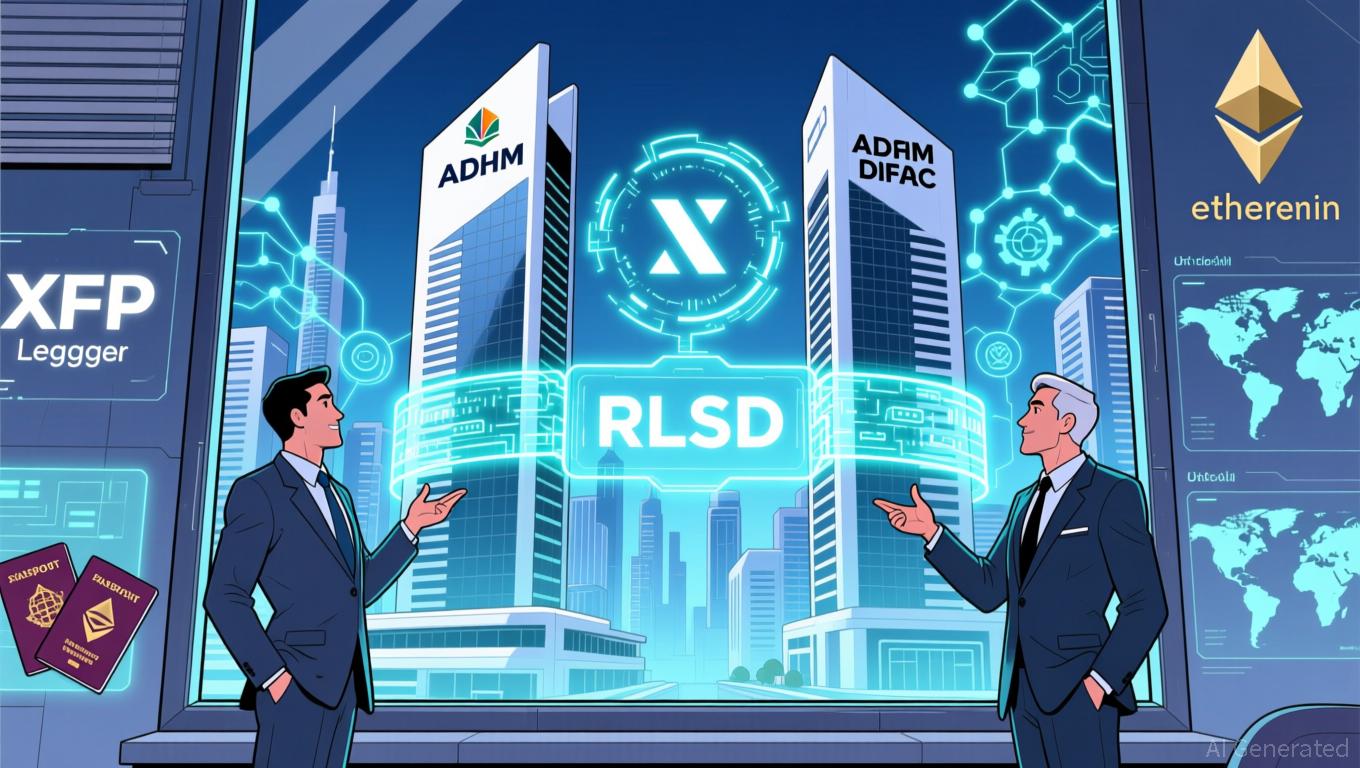The Recent Rise in Astar (ASTR) Value: Unveiling the Driving Forces Behind the Latest Surge
- Astar (ASTR) price surge driven by institutional adoption, robust on-chain metrics, and cross-chain innovation, with TVL rising to $2.38M in Q3 2025. - Astar 2.0's 150,000 TPS throughput and dynamic tokenomics (4.32% inflation) attract institutional investors seeking scalable, stable blockchain solutions. - Partnerships with Sony , Toyota , and others validate Astar's enterprise-grade infrastructure, aligning with crypto-traditional finance convergence trends. - Projected $0.80–$1.20 price target by 2030
On-Chain Analytics: Building Blocks for Expansion

Astar’s flexible tokenomics further enhance its appeal on-chain. The protocol dynamically adjusts token issuance in response to staking levels and transaction costs, maintaining a 4.32% inflation rate—a notable improvement over static emission systems
Institutional Adoption: Strategic Partnerships and Capital Influx
Institutional engagement has been pivotal to ASTR’s upward trajectory. A
The dApp Staking feature further attracts institutional attention. By enabling holders to stake
Macro Trends: Cross-Chain Progress and Market Integration
Astar’s achievements are closely linked to larger trends transforming the crypto industry. The increasing need for cross-chain interoperability—driven by the necessity to connect
Furthermore, Astar’s token model and institutional collaborations fit within the broader narrative of crypto merging with mainstream finance. As more institutional players allocate resources to digital assets, projects that deliver scalability, tangible use cases, and regulatory transparency—such as Astar—are well-positioned to excel. This trend is mirrored in Bitcoin’s decreasing correlation with stock markets and its increasing similarity to gold and bonds, a development
Looking Ahead: Opportunities and Challenges
Despite Astar’s strong fundamentals, certain risks persist. The token’s
Summary
Astar’s recent price rally is not a fleeting phenomenon but rather a testament to its strategic role at the crossroads of institutional engagement and blockchain innovation. By tackling scalability issues, building strong enterprise relationships, and employing flexible tokenomics, Astar has created a cycle that enhances both its utility and value. For investors, the main message is evident: as macroeconomic factors increasingly shape the market, platforms that successfully bridge Web2 and Web3—like Astar—are set to lead the next wave of crypto development.
Disclaimer: The content of this article solely reflects the author's opinion and does not represent the platform in any capacity. This article is not intended to serve as a reference for making investment decisions.
You may also like
XRP News Today: With Tether and USDC under examination, RLUSD from the UAE stands out as a regulatory-compliant stablecoin option.
- Ripple's RLUSD stablecoin received ADGM approval as a regulated fiat-referenced token in Abu Dhabi, enabling institutional use in payments and treasury management. - Pegged 1:1 to the USD with NYDFS oversight, RLUSD ($1.2B market cap) offers compliance-driven alternatives to USDT/USDC amid global regulatory scrutiny. - UAE's ADGM-DIFC regulatory framework positions the region as a crypto innovation hub, with Ripple expanding partnerships through Zand Bank and Mamo fintech . - The approval aligns with UAE

ZK Atlas Enhancement: Driving Institutional Embrace Amid the Blockchain Scalability Competition
- ZKsync's Atlas Upgrade solves throughput bottlenecks with Airbender RISC-V zkVM, enabling 15,000+ TPS at $0.0001 per transaction. - Modular ZKsync OS reduces gas fees by 70% since 2023, enabling real-time financial applications while maintaining regulatory compliance. - Deutsche Bank and UBS test ZKsync for asset tokenization, highlighting its institutional appeal through privacy-preserving ZK features and sub-second finality. - Upcoming Fusaka upgrade aims to push TPS to 30,000 by December 2025, but reg

Bitcoin Updates: Bitcoin Receives Major-Cap Status as Nasdaq Increases Options Limits Fourfold
- Nasdaq seeks SEC approval to quadruple IBIT options limits from 250,000 to 1 million contracts, aligning Bitcoin ETF with high-liquidity assets like EEM and GLD . - The proposal cites IBIT's $86.2B market cap, 44.6M daily shares traded, and industry support for addressing institutional demand amid Bitcoin's rapid financial instrument maturation. - Experts argue higher limits will reduce spreads, enable sophisticated hedging, and treat Bitcoin as a "mega-cap asset," while Nasdaq also seeks unlimited FLEX

XRP Update: ADGM's Green Light for RLUSD Strengthens UAE's Pursuit of Digital Financial Growth
- Ripple's RLUSD stablecoin secured ADGM approval as an institutional fiat-backed token in November 2025, following DIFC's June 2025 greenlight. - The UAE's dual regulatory endorsements position RLUSD for cross-border settlements, with $1.2B market cap driven by institutional demand for collateral and treasury tools. - ADGM's stringent oversight framework requires full reserve backing and AML compliance, aligning RLUSD with global standards under NYDFS charter . - XRP prices surged 24% in late 2025 amid $1
